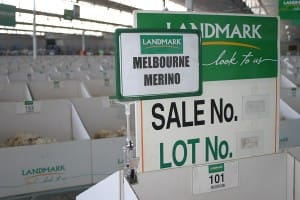 WOOL prices held firm this week as the $A-US exchange rate favoured buyers and demand focussed on high tensile strength and better-yielding, fleece and oddment lines.
WOOL prices held firm this week as the $A-US exchange rate favoured buyers and demand focussed on high tensile strength and better-yielding, fleece and oddment lines.
The AWEX Eastern Market Indicator closed 4 cents dearer on 1291c/kg clean with brokers passing in 6 percent of the 42,324-bale offering.
AWEX said the EMI in $US dollar terms finished 14 cents down in buyers’ favour on US931 cents as the Australian dollar traded US1.34 cents lower during the week.
AWEX senior market analyst Lionel Plunkett said anticipation of how central banks in Australia and the United States will set interest rates in the coming months seemed to be putting downward pressure on the Australian dollar.
“The currency, which has fallen 8pc in the past month, appears to be a major factor affecting the Australian wool market, with the weaker currency keeping wool prices buoyant.”
Mr Plunkett said the fifth largest Merino fleece offering for the season found good demand across most microns, but it was the stylish lots with high tensile results which attracted the most support and as a result continued to sell at a premium.
“A noticeable increase in vegetable matter levels compared to this time last year has created significant demand for all low level vm types.
“Fleece lots with less than 1pc vm are becoming increasingly sparse and as a result are selling at a premium to the higher vm lots.”
Mr Plunkett said skirtings followed a similar trend to the fleece market, with low vm lots keenly sought after.
“Shorter, high vm lots (up to 8pc) enjoyed more robust competition as buyers struggled with the limited quantity of the longer low vm types.
“However, very high vm (12pc) types maintained their recent discounts.”
Best style crossbreds continue to reduce in number and the limited supply finished the week fully firm. Merino cardings received significant buyer support on a limited offering rising around 10 cents for the week, he said.
Bidding led by large Chinese buyer
Australian Wool Innovations weekly market report said the flat to weaker forex scenario remains in play, with the foreign exchange rate fluctuations producing a flat Euro but a 1.9pc positive in $US terms for the week.
“The wool market itself failed to flatter to gain just 0.3pc of this potential gain.”
AWI said the Merino fleece sector had auction room buyers in a restrained frame of mind this week, with very little changes seen to price levels in Australian dollars.
“Buying of the “straight” or standard Merino fleece types was dominated by a single large Chinese indent operator, who was very keen right through to the close.
“Most buyer-exporters were seemingly content or unable to match the levels or beat the voracity of the Chinese buying intent,” the report said.
“Competition was evident from a handful of the larger forward sellers wanting to limit exposure to their short positions, or trying to get into a long position, but as soon as they executed what they “needed” to buy they seemed to immediately lessen their aggressive approach to purchasing.
“Whilst it has been reported the past month that the Merino market is currently paying premiums for the sale lots containing low readings of vegetable matter, it is also extracting healthy premiums for those lots with higher yields.”
AWI said most physical fleece wool contracts are written for average yields of around 68pc, so given that dry and dusty conditions have prevailed across large parts of Australia for the past six months or longer, a dearth of lower yields are on the market, thus sending the better yielding lots into “must buy” territory.
The AWI report said wool will not be sold in Fremantle next week and just under 30,000 bales will be offered nationally.
“A good market is forecast, with some strong upward pressure being applied on the final day this week.
“Global quantities are anticipated to be heading much lower than normal the next two months or so, therefore demand is likely to outstrip supply.”
Sources: AWEX, AWI.

HAVE YOUR SAY